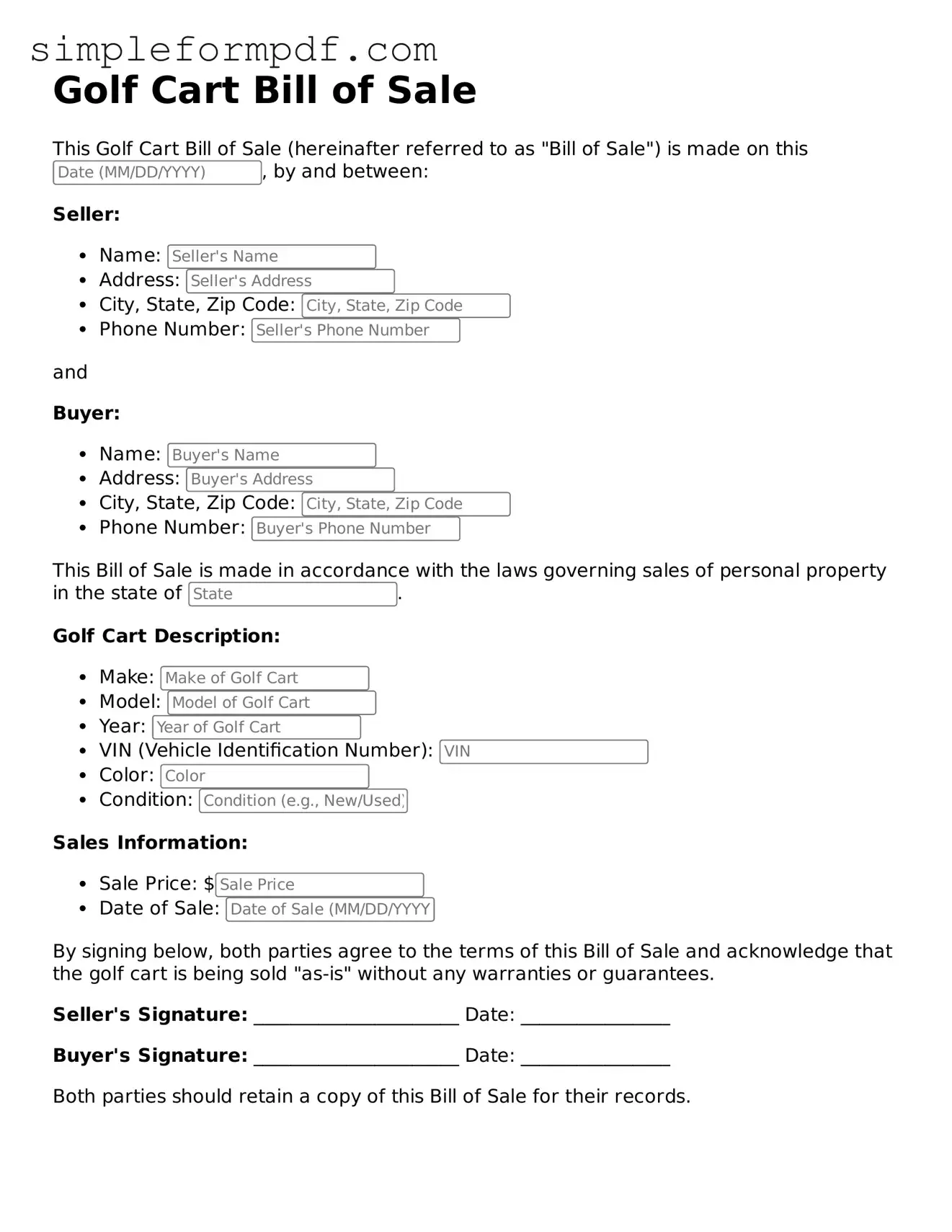Fillable Golf Cart Bill of Sale Template
A Golf Cart Bill of Sale is a legal document that records the transfer of ownership of a golf cart from one party to another. This form serves as proof of the transaction, detailing important information about the golf cart and the parties involved. To ensure a smooth transfer, it’s essential to fill out this form accurately.
Ready to complete your transaction? Fill out the form by clicking the button below.
Launch Editor
